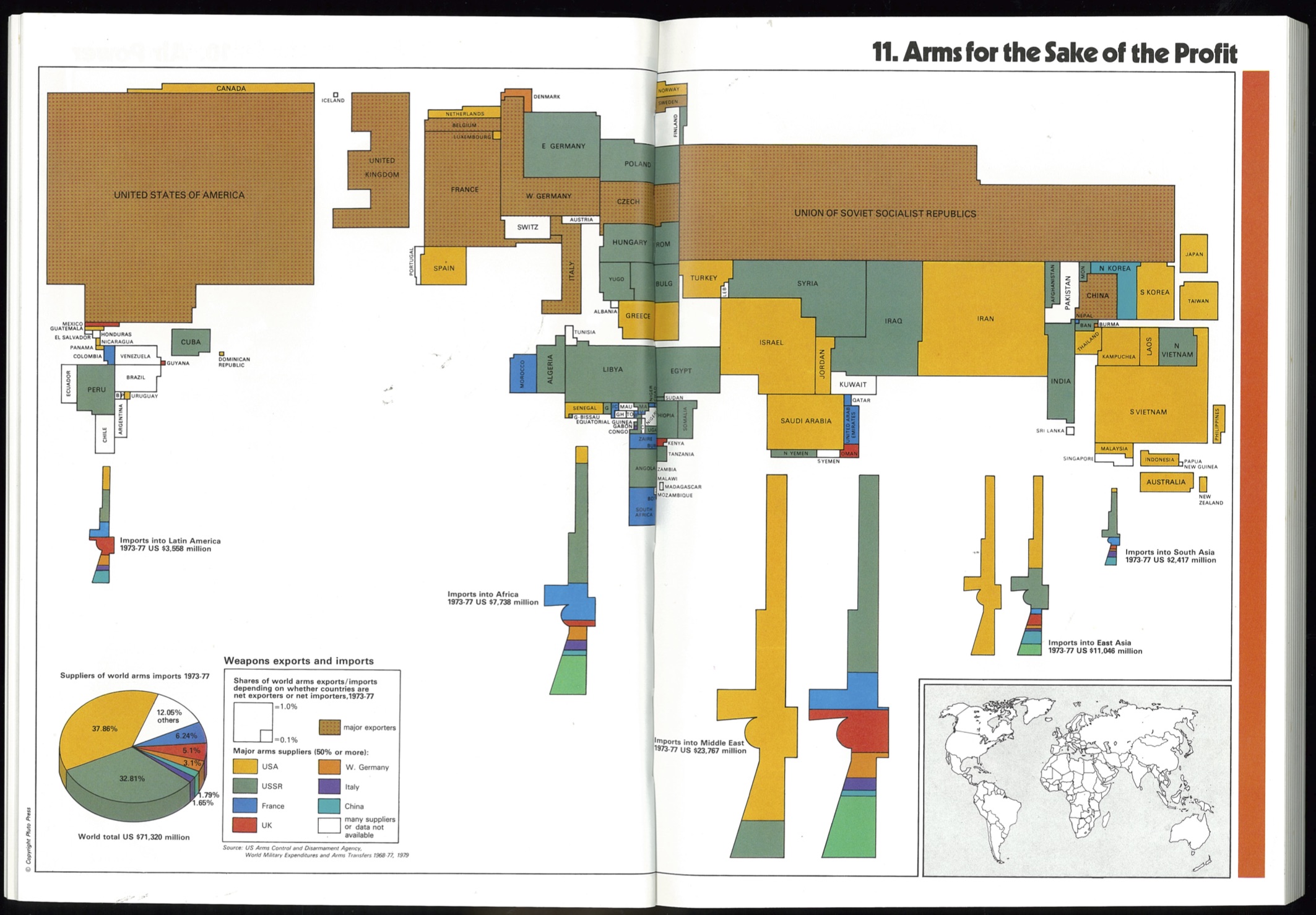

|
This graphically distorted map shows the relative amounts spent by states on the purchase of foreign arms. Major arms exporters are distinguished from major external arms importers and, in the case of the latter, the major source or arms is shown in colour. The colour breakdown in the figures at the bottom of the map provides a regional summary of the size and source of arms imports.
The acquisition of weapons is an expensive business, and for those who are able to supply them, an extremely profitable one. Although even major arms suppliers, such as France and the United Kingdom, seem to dwindle beside the two giants in arms supply, the USA and the USSR, it does not follow that their trade is unimportant for them, or for their particular markets. Exports are, in fact, less crucial to the arms industry in the USA and USSR, which have huge domestic arms markets, than to large parts of whose arms production is often ultimately dependent on the existence of export markets to supplement domestic ones.
Available statistics give different impressions of the USA’s share of the arms market. The official US statistics, which we have used, from the US Arms Control and Disarmament Agency, estimates the USA’s share of world arms sales in 1976 at 39 per cent, while Tom Gervasi, in Arsenal of Democracy (New York, Grove Press 1977) attributes more than 50 per cent of such sales to the USA, and the SIPRI Yearbook 1979, 48 per cent.
The choice of major arms supplier is, for some states, not a static one. Since the statistics for this map were collected, for instance, both Egypt and Somalia have elected to buy the majority of their arms from the USA rather than the USSR.
HTML last updated on 29 November 2020